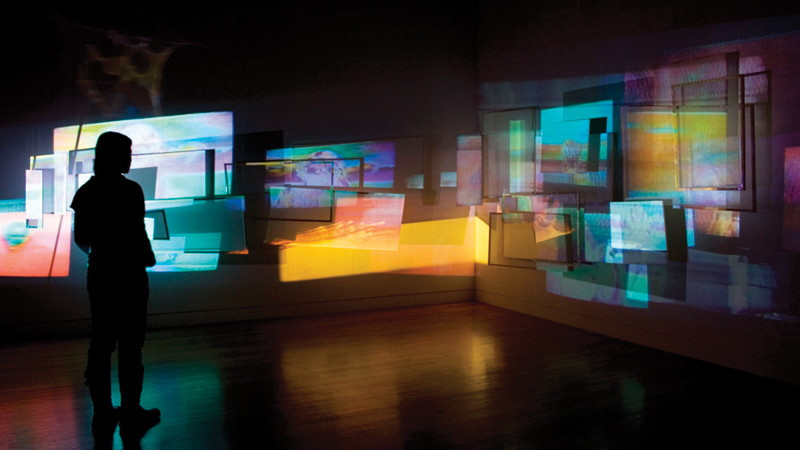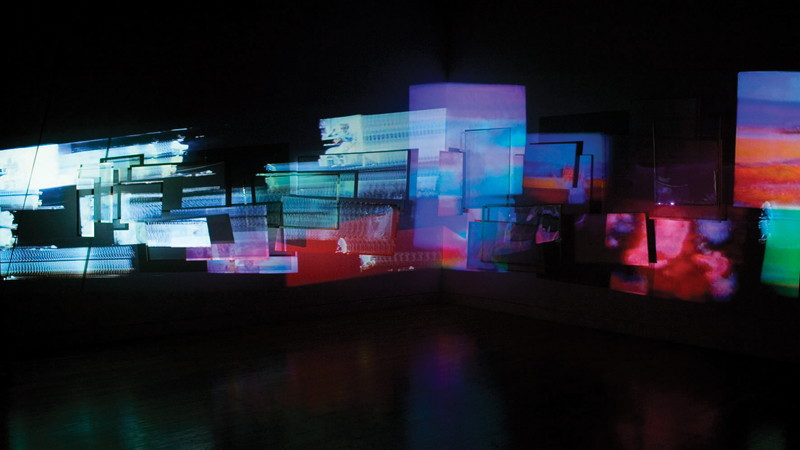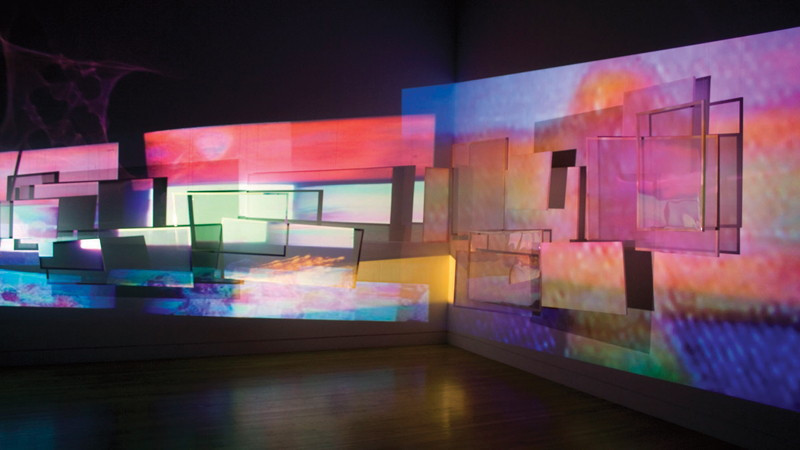Sensory overload
Film and video installation explores photography as a medium of time and space
Chronogram of Inexistent Time is a film and video installation by Chilean born artist Malena Szlam Salazar that focuses on photography as a medium of time and space.
Salazar, who now lives in Montreal, built two projectors out of scrapped pieces and used them to project still and moving images onto a multi-surfaced wall.
Salazar is part of a group of video, film and installation artists called the Double Negative Collective, and is interested in disseminating cinema and experimenting with its possibilities.
For this project, she was not so concerned with the images themselves but with how a camera can capture time and how to represent it.
Salazar said that this project is a culmination of her research in cinema and that the piece unifies a long process of trying to capture the incomprehensibility of time.
Remember the scene in A Clockwork Orange with the brainwashing movie? This video installation’s constant flashing images reminded me of that scene without the psychological negativity and the crying in fear.
“ Occasionally an image will remain fixed for a few seconds and your brain feels at ease again, but it quickly turns back to chaos with the incessant flow of photographs.
This exhibit made me realize how much our brains crave a context of time and space.
Salazar’s exhibit forces your brain to stop focusing on a single point in time and space, as the projectors relentlessly pump out image after image, many of which your brain does not have enough time to process.
Occasionally an image will remain fixed for a few seconds and your brain feels at ease again, but it quickly turns back to chaos with the incessant flow of photographs.
The multi-surfaced walls add to this effect of inexistent time because your brain can’t focus on a single point in space either.
The surfaces, whether it was the artist’s intention or not, resemble the architecture of a cityscape.
This effect seems to reflect time and space from a modern perspective, which suggests that human beings’ conceptions of time and space can be altered by culture.
The Winnipeg Film Group has Chronogram of Inexistent Time on display until Friday, Oct. 15, from 12 p.m. to 5 p.m. at the Black Lodge (third floor, 100 Arthur St.).
Published in Volume 65, Number 7 of The Uniter (October 14, 2010)









